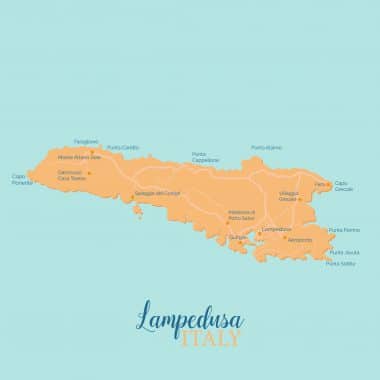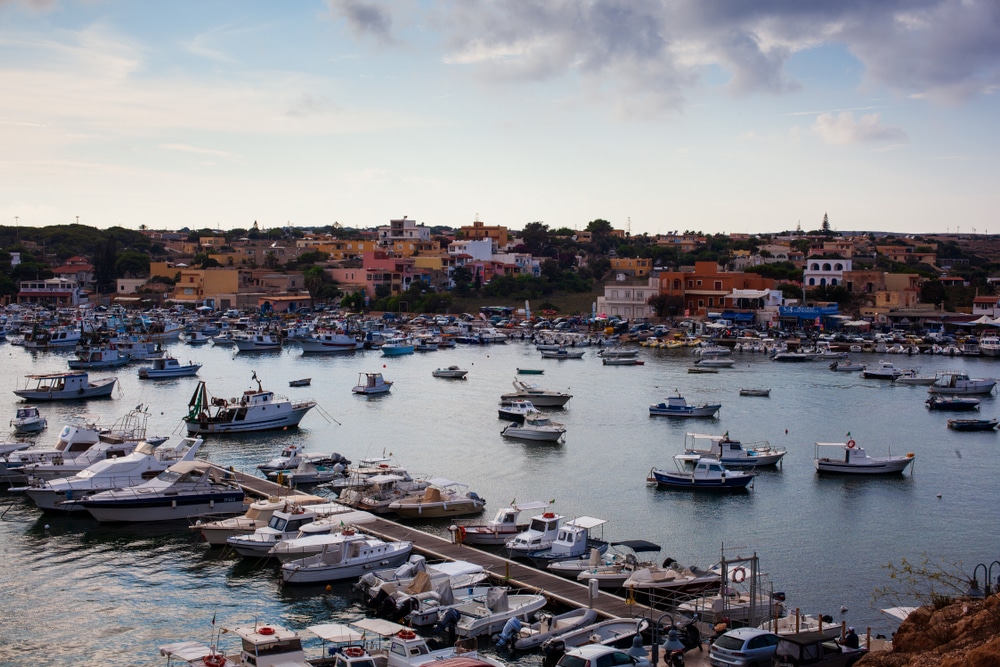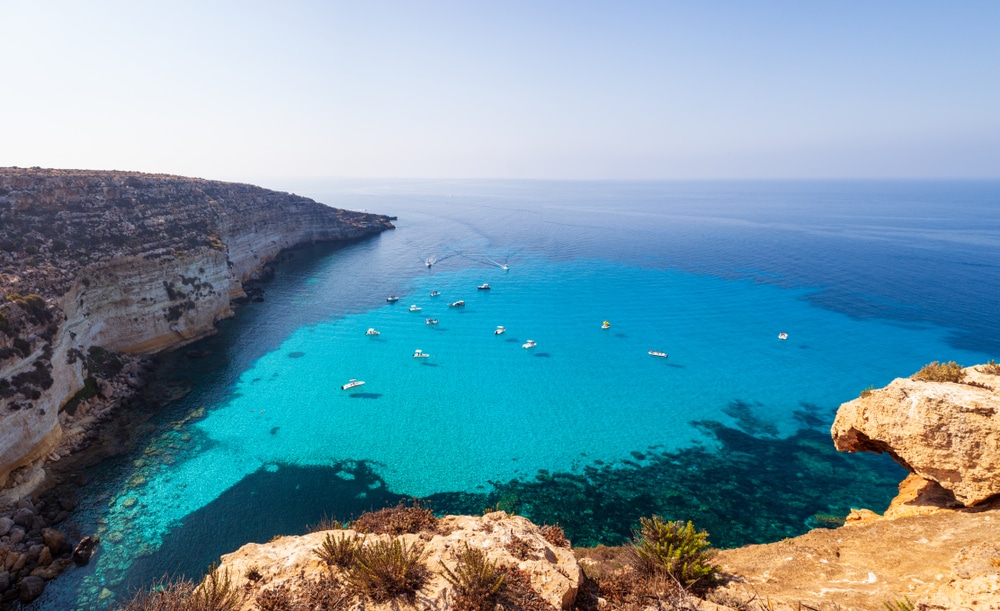
Lots of sun, water sports and diving experiences and wild nature await the visitor on Lampedusa and its sisters, the Pelagie Islands of Lampione and Linosa. The Pelagie Islands in Italy are the southernmost point of the European Union. These tiny dots in the Mediterranean are natural paradises. They mainly attract tourists who are looking for beautiful bays and beautiful sandy beaches in summer.
Crystal clear waters, beaches and cliffs
Crystal-clear, turquoise water with a view of the shallow bottom washes the coasts. The waves break wildly on the cliffs in the north and east of the island. The situation is completely different in the south. Snow-white sandy beaches delight sunbathers, divers and swimmers. Beaches such as Cala Madonna and Porto N’Tone, located in a bay, are ideal for families with children. At the Mare Morto beach, a large cave allows fascinating insights into the depths of the earth. Other mysterious grottoes captivate visitors to Cala Pulcino. The fashionable Guitgia beach is regularly served by public transport. On some beaches, people spend nights celebrating under the stars with grooved fish dishes and music.
Water sports on Lampedusa
Several diving schools offer courses, the highlights of which are joint dives in the clear sea and the touching experience of the flora and fauna under water. The Madonna Mare and Child stands at a depth of 14 meters on the seabed. There, green seagrass meadows with posidonia form important ecosystems. At Taccio Vecchio, parrot fishermen wait for their diving visitors in the underwater grotto there. Behind the Isola dei Conigli you can find underwater treasures such as star corals, colorful sponges, red crabs, perch and moray eels during the dives.
Coloured nature
A few forests in the southern valleys bring cooling and variety to the landscape. The island of Lampedusa otherwise looks like a rocky plateau for long stretches. A wide variety of colourful flowers of the exotic species delight hikers in the valleys. There it can meet flowers such as milk thistle, cistus with small flowers, silk stain and other exotic plants. Some, such as the small wild carrot or onion plant, as well as some adorable orchids, only grow here on Lampedusa.
Small boats and ships are moored in the harbours and are happy to take the traveller out to sea. It takes about three to four hours to circumnavigate the island once. Meanwhile, the boat driver serves a fish meal. Cooling cocktails are served in the beach bars. Peace and enjoyment, sun and beautiful nature rule the islands. Sea turtles can occasionally be found in the bays.
In the month of April, sperm whales are observed on the north coast. Many of these beautiful animals lay their eggs at the Isola dei Conigli, a few meters off the coast, where a walk over the very shallow seabed takes the visitor. Boats are prohibited there. In the evening, simple Italian cuisine, enriched here and there with African influences such as cous-cous, is enjoyed in the countless restaurants and trattorias. Goods that have been harvested or fished on the island are usually served. Seafood is most often found on the loaded plates.
Lampedusa, the place

In Lampedusa on the east coast, the original, historic buildings are largely preserved and not destroyed by Bettenburger. Life is concentrated in the lively harbour, where fishermen bring their catch ashore in the morning along Cala Palma. Many restaurants on Lampedusa are grouped around the harbour. Visitors particularly praise the Sciuri e Fava in Via Giovanni Verga. After dinner or in the afternoon, the bars around the harbour are well frequented. Hotels of all price ranges can be booked on Lampedusa. The island is reached by plane or ferry from Sicily .
The sister islands
Lampione, located 17 kilometers northwest of Lampedusa, is uninhabited. On the other hand, there are 500 inhabitants on Linosa, whose shape is characterized by three extinct volcanoes. This gem is rich in vegetation. Large parts of the island are protected to protect the endangered hawksbill turtles. The inhabitants live from fishing and agriculture and, more recently, from tourism, since some hotels have opened on the Linosa. Linosal can be reached from Lampedusa by hydrofoils. There storks, kestrels, rows, flamingos and gazelles are encountered in the wild.


